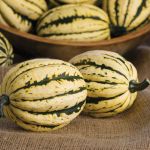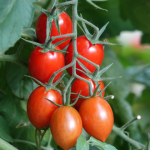Master Gardeners: Why it’s (almost) never too late
Published 9:15 am Sunday, July 20, 2025


While maybe not as optimal as a spring planting date for a vegetable garden, mid-summer planting is an option to keep your garden productive for a longer period of time. Our growing season seems to be expanding, so we can take advantage of the extra time increase the production in our gardens.
Considerations
One major consideration, if you are inclined to plant seeds, is the amount of time it takes the seeds to germinate. The seed packet usually has this information as well as the number of days to harvest.
Trending
According to the Texas A&M AgriLife Extension, the earliest average freeze date for our area is late November, but that is an average so it will vary. Most seeds will have adequate time to develop and those plants will be better acclimated to the heat. Transplants of course will shorten the time to harvest, but avoiding heat stress will have to be a priority.
The watering schedule will be especially intense until the plants have adapted to the heat and have sufficient root structure to support the plant. I use drip irrigation and I believe it is the best. If you do not have a system, a soaker hose will suffice.
At any rate, put the irrigation system on a timer. I can set the timer to water twice a day initially, then adjust depending on plant growth and water needs. If possible, PlantTAGG, a gardening site, suggests providing a shade structure until the plants are established. But consistent, deep watering is the key.
So What Can I Plant?
I was surprised by the number of options I found for planting at this time of the year. You can start with the obvious choice: tomatoes. By now, some tomato plants, especially the determinate ones, may have played out or are not producing.
Choose tomatoes with a quick harvest time, so your best bet may be cherry tomatoes and medium-sized varieties. Remove the lower plant stems and plan the tomato so that these nodes are below the ground. This procedure will allow the plant to establish a larger root system.
Trending
Pepper transplants of any variety from mild to hot can handle the heat and should continue to produce until the first frost. The Aggie Horticulture site suggests buying plants that are at 4 to 6 inches tall and plant them at least 18 inches apart.
Okra loves the heat, but transplants may be difficult to find. However, if you plant now, you should be harvesting within 60 days. Aggie Horticulture suggests soaking the seeds overnight to increase germination rates and to plant the seed two inches apart and then thin to 1 foot apart.
Southern Peas/Cow Peas come in several varieties: the black-eyed pea, crowder pea and purple-hull pea. All of them are good candidates for planting now. They love the heat and only need moderate watering.
The yardlong beans and lima beans are two more cow pea varieties and that can withstand the heat and are suitable for mid-summer planting. These peas should be sowed directly in the garden about one inch deep and eight inches apart.
You should start harvesting in 60 days
Now is a great time to plant squash, as both “summer” and “winter” varieties will have plenty of time to produce. Daniel Cunningham from PlantTAGG (@TXPlantGuy) states that zucchini planted now may do better because there are fewer squash bugs.
And, if you have lots of room, watermelon, cantaloup, and pumpkins can all be planted now (but hurry!).
Who Knew?
I have always done a spring garden and then transitioned to a fall garden with cabbages, lettuces, broccoli and various greens. I had never really considered mid-year planting until now. But okra and peas may be on our menu.
Vegetables suitable for mid-summer planting:
- Tomatoes
- Cow Peas
- Squash (Summer and Winter varieties)
- Okra
- Melons








